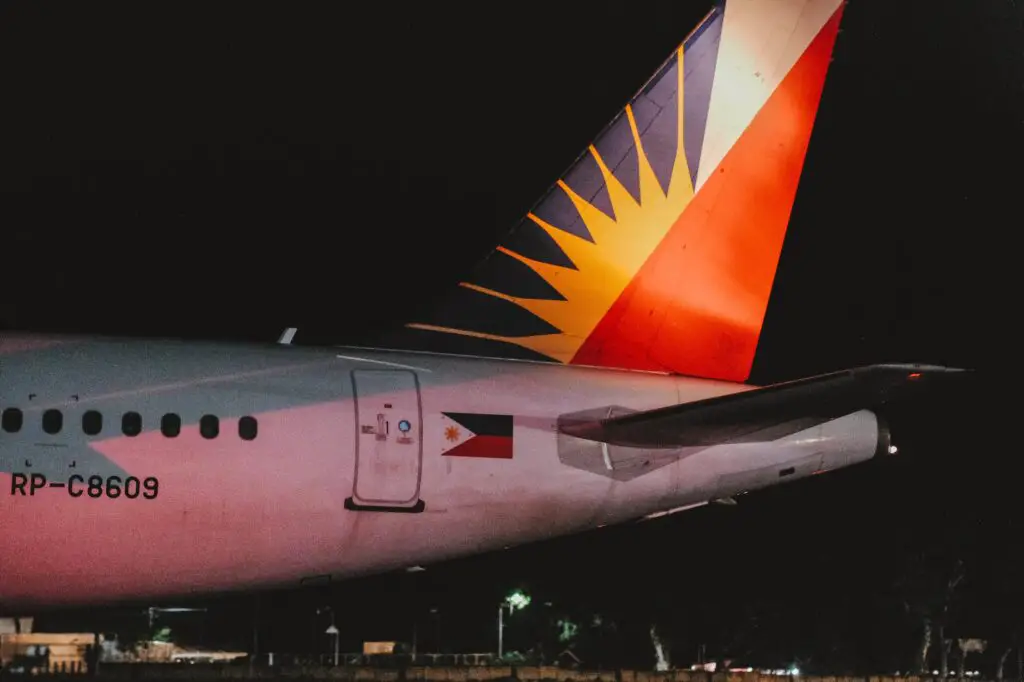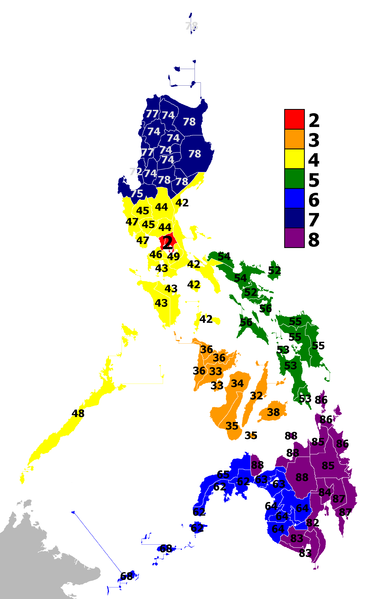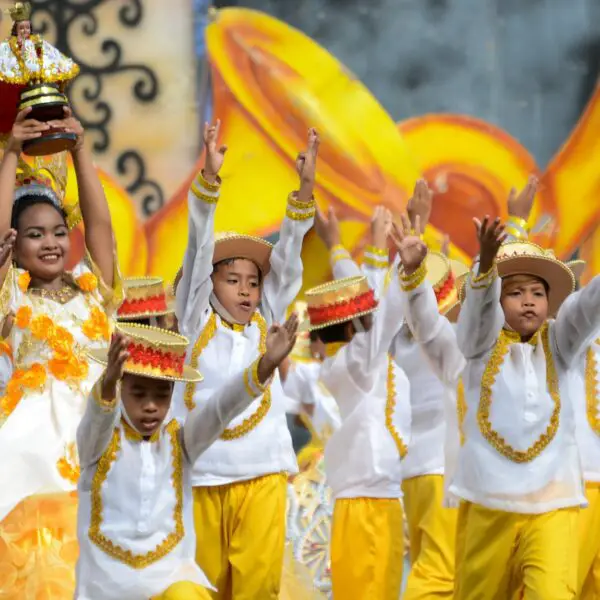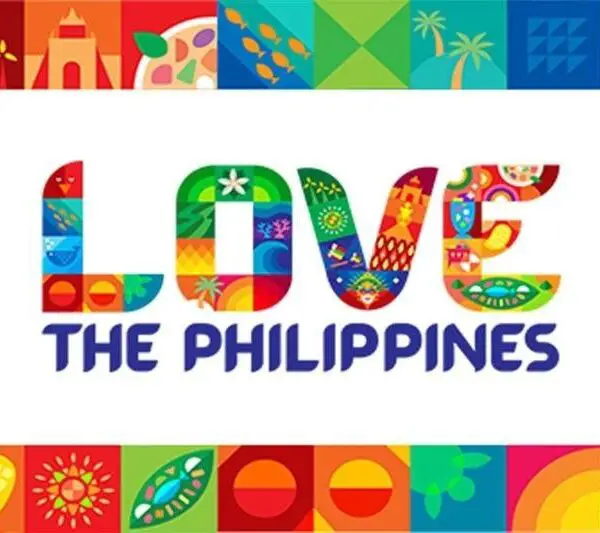Introduction
The Philippines, a tropical paradise in Southeast Asia, is a captivating travel destination that offers an abundance of natural wonders, vibrant culture, and warm hospitality. With its 7,641 islands stretching across the equator, this archipelago boasts breathtaking landscapes ranging from pristine beaches with crystal-clear waters to lush mountains and cascading waterfalls. Apart from its stunning natural beauty, the Philippines is also known for its intriguing history and diverse cultural heritage.
It is a melting pot of influences from Malay, Spanish, American, and indigenous cultures. From the bustling capital city of Manila to the picturesque island provinces such as Palawan and Cebu, there is something for every type of traveler here.
Brief overview of the Philippines as a travel destination
The Philippines’ geographical diversity ensures that there are endless opportunities for exploration. In Luzon, the largest island in the country and home to Manila, you can delve into the rich history by visiting Spanish-era churches or exploring ancient rice terraces in Banaue.
The Visayas region offers world-class beaches like Boracay and Bohol’s Chocolate Hills. Meanwhile, Mindanao beckons adventurous souls with its stunning waterfalls like Tinago Falls in Iligan City or Mount Apo in Davao del Sur – the highest peak in the country.
Aside from natural attractions, Filipinos take immense pride in their cultural traditions. Festivals such as Sinulog in Cebu or Ati-Atihan in Aklan showcase vibrant street parades filled with colorful costumes and pulsating rhythms that celebrate local folklore and religious devotion.
Importance of proper preparation for first-time travelers
For those embarking on their first journey to this enchanting destination, thorough preparation is essential for an enjoyable experience. The Philippines, with its unique characteristics and nuances, requires proper planning to make the most of your trip.
One crucial aspect of preparation is understanding the archipelago’s geography. With so many islands to choose from, deciding which regions or islands to explore can be overwhelming.
Researching extensively and identifying destinations aligned with your interests will help you maximize your time and ensure a well-rounded experience. Furthermore, familiarizing yourself with the country’s climate is vital for packing appropriate clothing and essentials.
The Philippines has a tropical climate characterized by two seasons: wet (June to November) and dry (December to May). Being aware of these weather patterns enables you to plan activities accordingly, whether it involves basking under the sun on beautiful beaches or exploring waterfalls during the drier months.
An integral part of proper preparation is learning about Filipino customs, traditions, and etiquette. Filipinos are known for their warm hospitality and respect for others.
Familiarize yourself with simple greetings like “Magandang araw” (Good day) or “Salamat” (Thank you), as even basic attempts at speaking Tagalog are appreciated by locals. Understanding cultural norms will enhance your interactions with locals and foster deeper connections throughout your journey.
The Philippines offers an enchanting blend of natural beauty, cultural heritage, and warm hospitality that beckons travelers from around the globe. Proper preparation before embarking on a trip to this captivating destination is crucial for making unforgettable memories while embracing all that this archipelago has to offer.
Pre-trip Planning
Researching the country’s geography, climate, and culture
Embarking on a journey to the captivating archipelago of the Philippines necessitates a solid understanding of its diverse geography, climate patterns, and rich cultural tapestry. Comprising more than 7,000 islands, this Southeast Asian gem offers an array of landscapes ranging from pristine beaches to lush rainforests and towering mountains. Researching these geographical aspects will help you determine which regions or islands align with your interests and preferences.
For instance, Palawan enthralls with its breathtaking limestone cliffs and crystal-clear waters, while Manila presents a vibrant fusion of history and modernity. To truly immerse yourself in the Philippine experience, familiarizing yourself with the local climate is crucial.
The country enjoys a tropical climate characterized by distinct wet (June to November) and dry (December to May) seasons. However, particular regions may have slightly different weather patterns due to their location or topography.
It is advisable to check weather forecasts for your chosen destinations beforehand to pack appropriate clothing and plan activities accordingly. Learning about Filipino customs, traditions, and etiquette will enhance your interactions with locals and deepen your appreciation for their culture.
Hospitality is highly valued in Filipino society; thus, embracing their warm greetings like “Mabuhay” (which means “Welcome” or “Live”) can go a long way in fostering positive connections. Additionally, understanding traditional customs such as removing footwear when entering homes or religious places demonstrates respect for local norms.
Obtaining necessary travel documents and vaccinations
Before embarking on your journey to this enchanting archipelago, it is imperative to ensure that all essential travel documents are in order. Begin by checking the validity of your passport; it should ideally have at least six months remaining before expiration from your planned departure date. If necessary based on your nationality, apply for the appropriate visa well in advance to avoid any last-minute complications.
In terms of healthcare, consulting a healthcare professional is highly recommended to discuss and obtain any necessary vaccinations or medications before traveling to the Philippines. The healthcare provider will assess your medical history, and destination-specific risks, and recommend vaccines such as Hepatitis A and B, typhoid, or tetanus-diphtheria.
While it is essential to prioritize personal health safety, being mindful of potential health risks and taking necessary precautions will ensure a worry-free journey. Creating a detailed itinerary tailored to your interests is an excellent way to make the most of your time in the Philippines.
The country boasts numerous must-visit destinations that cater to various preferences. Manila, the bustling capital city, offers a mix of historical landmarks and metropolitan delights.
For those seeking idyllic island getaways with powdery white sand beaches and turquoise waters, Palawan or Boracay are popular choices. Research specific attractions like Underground River National Park in Palawan or White Beach in Boracay; this way, you can plan your days efficiently and maximize your experience.
Immersing yourself in local culture becomes even more enriching when timed with festivals or events unique to certain regions. Researching festivals such as Sinulog in Cebu or Panagbenga Flower Festival in Baguio can add vibrant cultural experiences to your itinerary.
By incorporating these distinct celebrations into your plans, you not only witness remarkable traditions but also gain insight into the rich heritage that defines Filipino culture. By conducting meticulous pre-trip planning encompassing geography, climate awareness, cultural understanding, travel documentation fulfillment along with targeted research on destinations and attractions; you will lay a solid foundation for an unforgettable adventure across the fascinating archipelago of the Philippines.
Packing Essentials
Lightweight clothing suitable for tropical climate
When preparing for a trip to the beautiful tropical paradise of the Philippines, it is crucial to pack lightweight clothing that will keep you cool and comfortable in the warm climate. Opt for breathable fabrics like cotton or linen, which allow air circulation and help wick away moisture, preventing discomfort caused by excessive sweating.
Choose loose-fitting tops, dresses, shirts, and shorts to promote better airflow around your body. Keep in mind that lightweight layers are ideal as they provide flexibility to adapt to different temperatures throughout the day.
Packing comfortable footwear for walking or hiking
Exploring the diverse landscapes of the Philippines often involves a fair amount of walking or even hiking. It is essential to pack comfortable footwear that can withstand long hours of strolling through cities or trekking over uneven terrains.
Opt for sturdy sneakers or walking shoes with good arch support and cushioning. If you plan on hiking in more challenging areas such as mountains or volcanoes, consider bringing lightweight hiking boots or trail shoes with excellent grip to ensure stability and prevent slips.
Essential items to bring along
In addition to clothing choices, there are several essential items you should include in your packing list when traveling to the Philippines for the first time. One such item is sunscreen with a high SPF (Sun Protection Factor) rating.
The Philippine sun can be intense and unforgiving; protecting your skin from harmful UV rays is crucial. Additionally, it’s important to bring insect repellent containing DEET (N,N-Diethyl-meta-toluamide) or other mosquito-repelling ingredients since mosquitoes are prevalent in certain regions of the country.
Sunscreen with high SPF to protect against intense sun exposure
The scorching sun in the Philippines can cause severe sunburns if not properly protected. It is recommended to use sunscreen with a high SPF of 30 or above, preferably broad-spectrum to shield your skin from both UVA and UVB rays. Apply it generously on exposed skin, especially your face, neck, arms, and legs.
Remember to reapply every few hours, especially after swimming or excessive sweating. Investing in a quality sunscreen will ensure that you can enjoy the sun-drenched adventures without worrying about harmful sunburns.
Insect repellent to guard against mosquitoes and other bugs
Mosquitoes are common in certain parts of the Philippines and can be carriers of diseases such as dengue fever or malaria. Protect yourself by packing an effective insect repellent containing DEET or other approved ingredients.
Apply it regularly on exposed areas of your body, particularly during dawn and dusk when mosquitos are most active. Additionally, consider wearing light-colored clothing with long sleeves and pants that provide an extra layer of protection against mosquito bites.
Extra considerations for beach destinations
If you’re planning to soak up the sun on the stunning beaches of the Philippines, there are a few additional items you should consider packing. Don’t forget to bring swimwear that suits your style and preferences – whether it’s a bikini, trunks, or a comfortable one-piece swimsuit – to make the most out of your beach experience.
Alongside swimwear, pack a lightweight beach towel that dries quickly and won’t take up much space in your bag. For those who wish to explore the vibrant marine life beneath the crystal-clear waters surrounding many Philippine islands, snorkeling gear is essential.
Bring your own mask, snorkel tube, and fins for an unforgettable underwater adventure filled with colorful coral reefs teeming with tropical fish. Snorkeling allows you to fully immerse yourself in nature’s wonders while preserving precious memories through breathtaking encounters with marine life.
Remember, proper packing ensures a comfortable and enjoyable trip to the Philippines. By considering these essentials and tailoring them to your specific needs and interests, you’ll be ready to embark on an unforgettable journey through this tropical paradise.
Getting Around in the Philippines
Public Transportation Options
When it comes to getting around urban areas in the Philippines, jeepneys, tricycles, and pedicabs are popular modes of transport. Jeepneys are colorful and iconic vehicles that offer a unique Filipino experience. These extended jeeps can accommodate several passengers and follow specific routes.
Tricycles are small motorcycles with sidecars attached, ideal for short trips within towns or cities. Pedicabs, on the other hand, are bicycle-powered carts suitable for shorter distances or exploring narrow streets.
Utilizing jeepneys, tricycles, or pedicabs in urban areas
To utilize these public transportation options effectively, it is essential to familiarize yourself with their operations. Jeepneys usually display their route on signboards placed at the front window. Simply wave your hand to flag one down and pay the fare when you exit – usually passed from passenger to driver through other passengers.
Tricycles can be found at designated stops or hailed from the roadside; negotiate the fare before hopping in. Pedicabs are commonly found in neighborhoods with narrower roads; you can negotiate a price directly with the driver.
Exploring rural areas by riding buses or vans
For exploring rural areas and traveling between towns and cities in the Philippines, buses and vans provide reliable options. Buses come in different classes – air-conditioned (known as “ceres”) or non-air-conditioned (known as “ordinary”).
Ceres buses offer more comfort but may have limited destinations compared to ordinary buses which operate on more routes across various provinces. Vans known as “UV Express” also operate between towns and cities; they are smaller than buses but offer faster travel times.
Internal Flights
The Philippines consists of many islands where internal flights can be a convenient and time-saving option. Domestic airlines provide regular flights to major destinations, making it easier to explore different regions.
Airlines such as Philippine Airlines, Cebu Pacific, and AirAsia offer a range of routes and schedules. Booking internal flights in advance is recommended to secure the best fares and ensure smooth travel transitions.

Photo by Denniz Futalan on Pexels.com
Conclusion
As you embark on your first-time adventure to the enchanting Philippines, navigating the country’s transportation options can enhance your overall experience. From jeepneys adorned with vibrant colors to tricycles buzzing around bustling streets, urban areas offer unique modes of transport that embody the Filipino spirit.
In rural areas, buses and vans connect towns and provinces efficiently. Internal flights provide an opportunity to hop between islands conveniently.
Embrace these diverse transportation options with confidence, embracing each journey as a chance to immerse yourself further into the beauty of this captivating archipelago. Safe travels!
RELATED POSTS
-
Everything You Need To Know About Cebu Zip Codes & Area Codes

Learn how to use Cebu ZIP codes and area codes for mailing, online transactions, and emergencies. Get the correct information you need now.
-
Dive into Filipino Culture: What Every Traveler Should Know

Introduction The Philippines, an archipelago of 7,641 stunning islands nestled in Southeast Asia, is a haven for travelers seeking diverse landscapes, vibrant cities, and warm hospitality. With its pristine beaches,…
-
Embracing the Enchanting Essence of the Philippines: Unveiling the Captivating Slogan – Love the Philippines

Uncover the allure of the Philippines’ new tourism slogan: Love the Philippines, and its power to captivate visitors worldwide.
